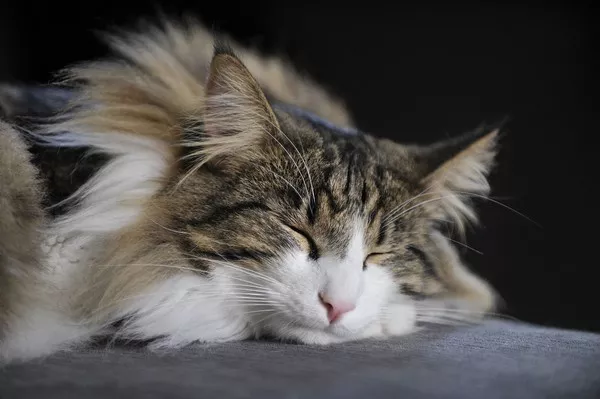Cats, with their enigmatic and often unpredictable behavior, have long fascinated humans. Among the many mysteries surrounding these beloved pets is the question of whether cats are ticklish. While cats may not respond to tickling in the same way humans do, they do have sensitive areas and reactions that hint at their unique sensory experiences. In this article, we will explore the concept of ticklishness in cats, their sensitive spots, and the science behind their intriguing responses.
Understanding Ticklishness:
Ticklishness is a complex and multifaceted sensation experienced by humans and some animals. It typically involves the stimulation of sensitive skin or nerve endings, resulting in laughter, giggling, or involuntary movements as a response to the tickling sensation. While ticklishness varies from person to person, it is a shared experience among humans, rooted in the wiring of our nervous systems.
Can Cats Experience Ticklishness?
Cats, being distinct from humans both physiologically and behaviorally, do not experience ticklishness in the same manner we do. Unlike humans, cats do not burst into laughter or display overt signs of amusement when touched in certain areas. Instead, their responses to tickling-like sensations are more subtle and instinctual.
Feline Sensitive Spots:
Cats have sensitive areas on their bodies that, when stimulated, can elicit various reactions. Understanding these spots can help pet owners provide enjoyable and stress-free interactions with their feline companions. Some common feline sensitive spots include:
Whiskers: Cats have highly sensitive whiskers (vibrissae) that serve as tactile sensors. Touching or brushing a cat’s whiskers can be uncomfortable for them, and they may react by pulling away or swatting.
Ears: A cat’s ears are delicate and filled with sensory receptors. While cats may not enjoy having their ears touched, gently massaging the base of their ears can be pleasurable for some cats.
Belly: The belly area is a sensitive spot for many cats. While some cats may enjoy belly rubs, others may react defensively with swatting or biting. It’s essential to approach a cat’s belly cautiously and respect their boundaries.
Paws: Cats’ paws contain numerous nerve endings and sensitive pads. Some cats may be sensitive about their paws being touched, while others are more tolerant.
Tail: The base of a cat’s tail is a sensitive area, and many cats enjoy being gently stroked there. However, it’s crucial to be cautious, as excessive or rough handling of the tail can cause discomfort.
Feline Reactions to Sensation:
While cats may not exhibit laughter or giggles when tickled, they do display various reactions when specific areas are stimulated:
Purring: Cats often purr when they are content or relaxed. Gentle stroking in areas they enjoy, such as the head or chin, can elicit purring.
Tail Twitching: Some cats may twitch or flick their tails when their tail base is stimulated, indicating pleasure.
Kneading: Cats often knead with their front paws when they are comfortable and content. This behavior is a remnant of kittenhood when they kneaded their mother’s belly to stimulate milk flow.
Biting or Scratching: Cats may react defensively by biting or scratching when sensitive areas, such as the belly or paws, are touched excessively or with too much pressure. This is a protective response and not a sign of enjoyment.
Body Language: Observing a cat’s body language is crucial in understanding their comfort level during interactions. If a cat leans into gentle touches, keeps their tail relaxed, and appears at ease, they are likely enjoying the sensation. Conversely, signs of discomfort include flattened ears, dilated pupils, and attempts to escape.
The Science Behind Feline Sensations:
Cats’ unique responses to touch and sensations are deeply rooted in their evolutionary history and physiology. Unlike humans, who may laugh or giggle when tickled, cats have evolved to be more stoic and reserved. Their responses are primarily driven by instinct and survival mechanisms.
Cats are known for their finely tuned sensory systems. Their whiskers are exceptionally sensitive, providing information about their surroundings, including potential threats or prey. Therefore, touching or stimulating a cat’s whiskers may evoke a strong reaction as it disrupts their sensory input.
Furthermore, cats have a heightened sense of touch due to the presence of sensory receptors in their skin, particularly around the face and paws. These receptors are essential for hunting, grooming, and exploring their environment. While some cats may tolerate being touched in these sensitive areas, others may react defensively to protect themselves.
Respecting Your Cat’s Boundaries:
Understanding and respecting your cat’s preferences and boundaries when it comes to touch is crucial for maintaining a positive and trusting relationship. Here are some tips for interacting with your cat in a way that respects their comfort:
Observe Body Language: Pay attention to your cat’s body language and facial expressions. If they appear relaxed and content, continue with gentle petting. If they show signs of discomfort, such as flattening their ears or twitching their tail, give them space.
Start Slowly: If you want to introduce your cat to new types of touch or sensations, start slowly and gently. Allow your cat to become accustomed to the sensation over time.
Find Preferred Areas: Every cat is unique, and their preferred petting spots may vary. Discover which areas your cat enjoys being touched and focus on those.
Be Mindful of Limits: Recognize your cat’s limits and avoid pushing them into situations that make them uncomfortable. Cats need personal space, and it’s essential to respect their need for alone time.
Positive Reinforcement: Use positive reinforcement, such as treats or affection, to reward your cat for allowing certain types of touch or interactions.
Conclusion:
While cats may not experience ticklishness in the same way humans do, they do have sensitive areas and unique responses to touch and sensations. Understanding your cat’s preferences and boundaries is essential for fostering a trusting and enjoyable relationship. Through gentle and respectful interactions, you can provide your feline friend with comfort and companionship, ensuring that both you and your cat enjoy your time together.


























